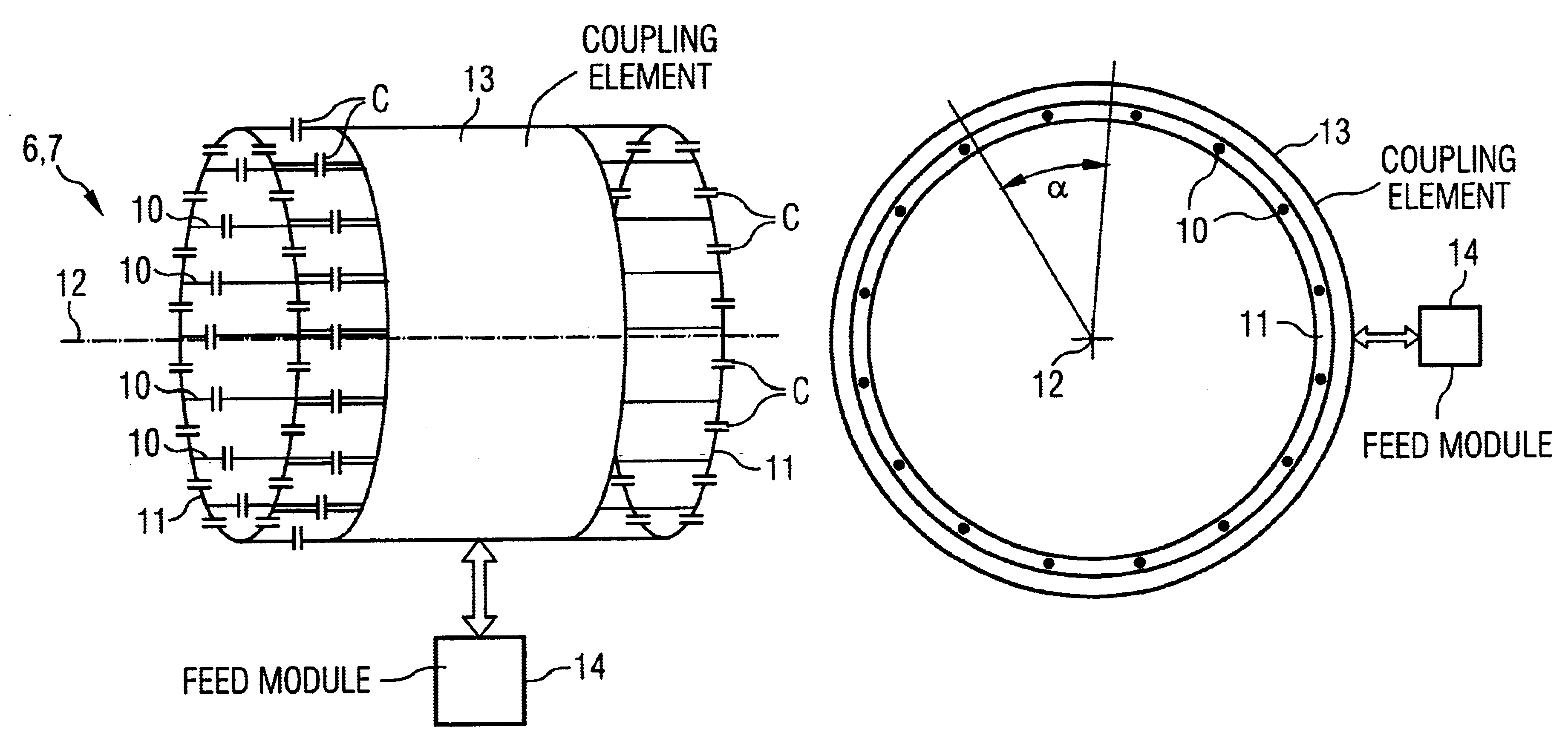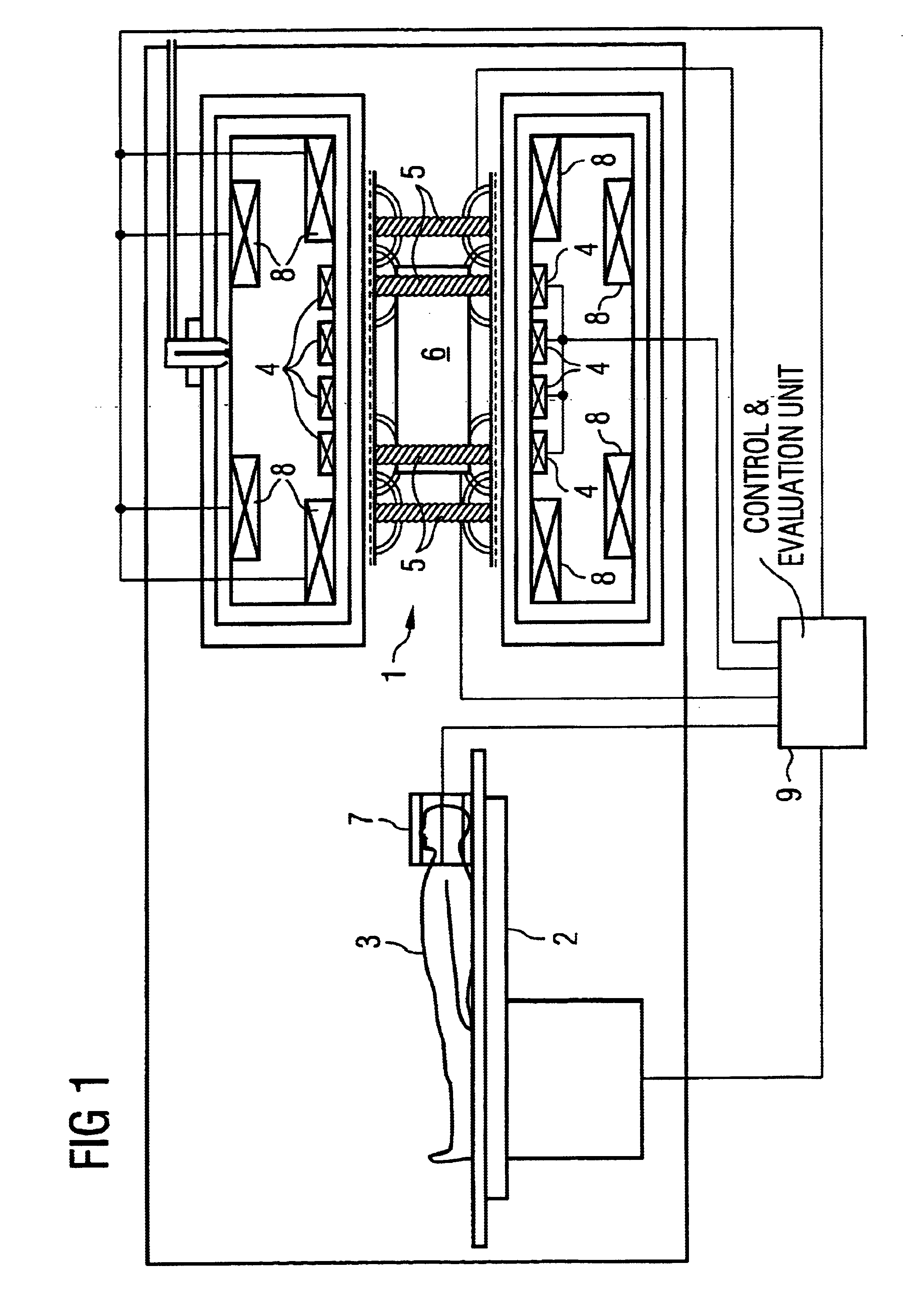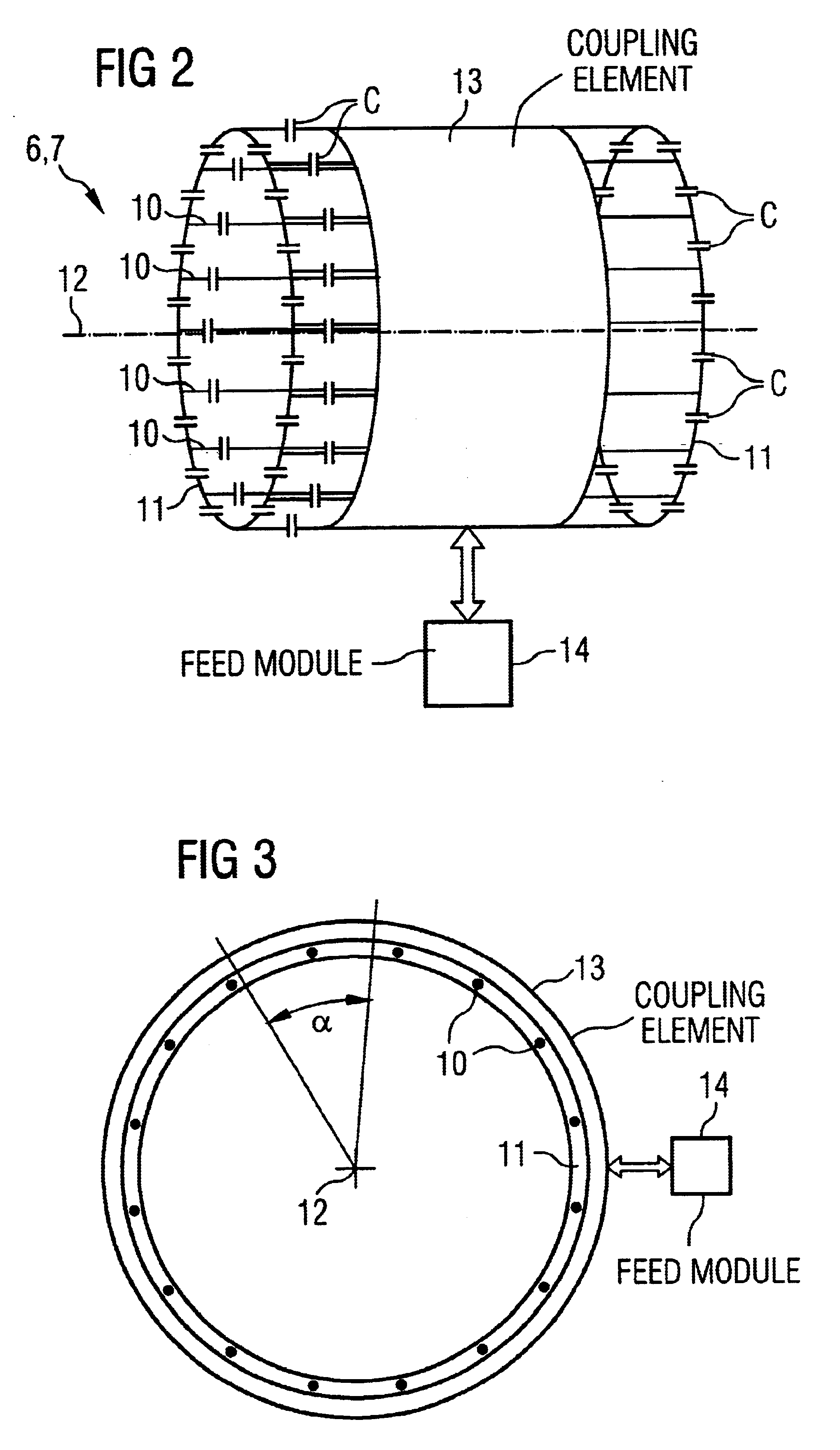Radio-frequency antenna for a magnetic resonance system
a radio-frequency antenna and magnetic resonance technology, applied in the field of radio-frequency antennas for magnetic resonance systems, can solve the problem that mode separation cannot be achieved through frequency-dependent impedances, and achieve the effect of high excitation efficiency
- Summary
- Abstract
- Description
- Claims
- Application Information
AI Technical Summary
Benefits of technology
Problems solved by technology
Method used
Image
Examples
Embodiment Construction
The magnetic resonance system shown in FIG. 1 has an examination space 1. A patient 3 (in general: an examination subject 3) can be introduced into the examination space 1 with a patient bed 2. The examination space 1 is essentially cylindrical.
The examination space 1 is surrounded by various magnets and magnet systems. First, there is a basic magnet 4. The basic magnet 4 generates a homogeneous basic magnetic field. A gradient magnet system 5 is also present. Gradient fields, which are required for generating meaningfully interpretable magnetic resonance signals, are generated with the gradient magnet system 5. The magnet system also has a whole-body coil 6. The whole-body coil 6 is fashioned as a radio-frequency antenna 6. Given operation as transmission antenna, it serves for exciting magnetic resonance signals in the examination subject 3. Given operation as reception antenna, it serves for the reception of previously excited magnetic resonance signals of the examination subject...
PUM
 Login to View More
Login to View More Abstract
Description
Claims
Application Information
 Login to View More
Login to View More - R&D
- Intellectual Property
- Life Sciences
- Materials
- Tech Scout
- Unparalleled Data Quality
- Higher Quality Content
- 60% Fewer Hallucinations
Browse by: Latest US Patents, China's latest patents, Technical Efficacy Thesaurus, Application Domain, Technology Topic, Popular Technical Reports.
© 2025 PatSnap. All rights reserved.Legal|Privacy policy|Modern Slavery Act Transparency Statement|Sitemap|About US| Contact US: help@patsnap.com



